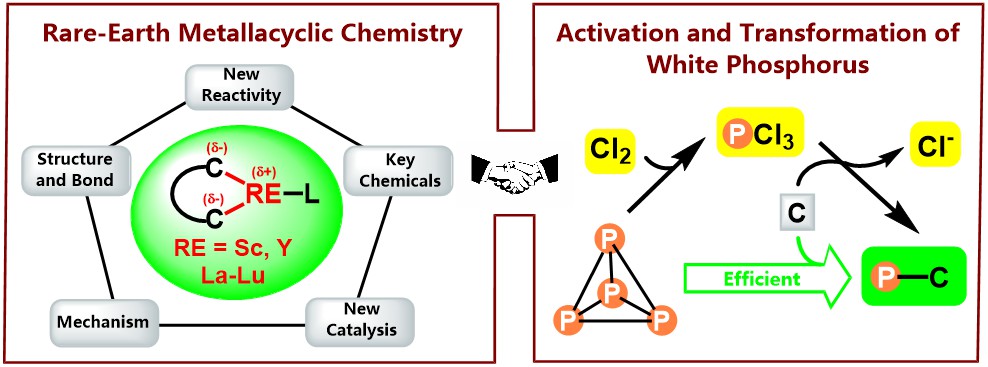The creation and transformation of new molecules with the original breakthrough and the prospect of industrial application is the basis of synthetic chemistry. New rare-earth organometallic complexes play crucial roles in synthetic chemistry. The study on the synthesis, structure and transformation of rare-earth metallacyclic complexes is significantly required because they lagged behind those of transition-metal congeners for decades. The synthesis and isolation of these rare-earth organometallic complexes are very challenging due to the facts: i) rare-earth metal-carbon bonds are predominantly ionic; ii) rare-earth metal ions have various coordination numbers; iii) the coordination geometry of rare-earth metal ions is less regular and predictable than that of d-block metal ions; and iv) rare-earth organometallic complexes easily undergo ligand redistribution.
On the other hand, organophosphorus compounds (OPCs) play an important role in synthetic chemistry. The preparation of OPCs usually goes through the chlorination of white phosphorus (P4), which is costly and poses serious safety and environmental issues. Starting from the industrial raw material P4, we developed innovative methods without chlorination of P4 for direct, efficient, and highly selective synthesis of various OPCs.
Our group adheres to the philosophy of “Synthetic Chemistry Based on Mechanism and Organometallic Reactive Intermediates”. The research focuses on the realm of rare-earth metallacyclic chemistry, the design and application of rare-earth photocatalysts, and the activation and transformation of white phosphorus. At the intersection of inorganic and organic chemistry, we seek convergence points for research, with a particular focus on exploring fundamental scientific questions in phosphorus chemistry, phosphorus chemical industry and the application of rare-earth organometallics. Our research interests span organometallic chemistry, elemento-organic chemistry, computational chemistry, machine learning driven by synthetic chemistry of organometallics and elemento-organic compounds, coordination chemistry, and crystallography. Balancing both foundational and applied aspects, our group places emphasis not only on fostering students’ research capabilities, but also on the holistic development of their personalities.






